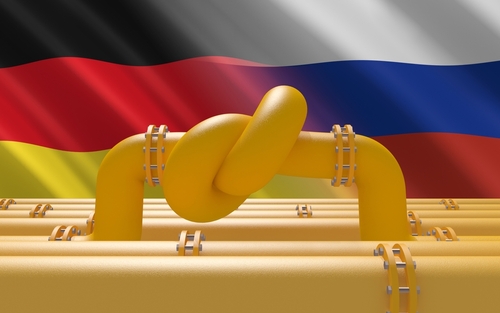
Commodities | EEMEA | Europe

Commodities | EEMEA | Europe
Russian state-backed energy group Gazprom has limited gas flows on the Nord Stream 1 (NS1) pipeline to just 20% of capacity. Given developments in the Russian invasion of Ukraine, the situation will more likely worsen than improve. We examine how Germany might survive if NS1 flow does not rise, and if it stops completely. We find that a 15% reduction in usage (in line with EU guidance) would be sufficient only if NS1 flow is not reduced further.
Europe is highly exposed to Russian gas. Germany is the bloc’s economic centre yet has one of the least diversified gas supplies. In 2021, its natural gas consumption was 100bcm, a quarter of its total energy consumption. Germany imports most of this gas, with Russia supplying over a third and the rest mostly coming via the Netherlands and Norway.
Consumption in Q1 2022 fell 9% compared with 2021, largely due to reduced demand from unusually mild temperatures over the winter rather than policy action (Chart 1). Meanwhile, imports rose 9% in Q1 compared with 2021 as the country attempted to rebuild supplies ahead of the 2022/23 winter (Chart 2).

Historically, Russian gas into Germany has not come just via NS1 (which accounts for 30% of Germany’s gas supply). It has also come via Poland and the Czech Republic. However, since the war began, gas imports of all routes have fallen substantially (Chart 3).

LNG is the obvious choice to replace lost gas supply. It is transported on ships and is interchangeable with natural gas once processed. However, Germany currently has no LNG processing capabilities, and permanent LNG processing facilities typically take 3-5 years to construct. The government has so far identified five new terminals (total capacity 40bcm) and rolled out a substantially accelerated timeline for construction (three terminals online by end-2022, another two by end-2023). The feasibility of this seems low. But even if achieved, the projected import capacity across the entire timeframe will still undershoot the reduction in Russian gas imports from January 2022 to now (Chart 4).
Germany is set to restart mothballed coal-fired power plants to reduce gas consumption from electricity generation (c.14% gas usage). However, studies suggest the effect on natural gas demand may be limited. Additionally, low water levels on the Rhine are already restricting passage of coal barges, and the situation is expected to get worse.
The EU has proposed a 15% reduction target on gas consumption to shore up storge for the winter. By our calculations, however, this may be too little for Germany.
We modelled Germany’s projected gas supply on two scenarios: one where NS1 remains at 20% of capacity, and one where Russia shuts the pipeline completely. Based on our projections, the less severe scenario would require Germany to cut gas consumption by 10% to prevent storage running out (Chart 5). Meanwhile, if NS1 supply stopped completely, usage must drop by 20% (Chart 6).
Therefore, a 15% reduction in gas consumption should be sufficient for Germany to avoid a winter gas shortage. But should flow via NS1 stop, it may prove insufficient. The Russians likely know this. Given their geostrategic aims, recent poor progress in their invasion and the trajectory of energy weaponization so far, we cannot exclude the possibility of further supply cuts.

A 15% cut in demand is no small feat. Based on our calculations and 2020 BDEW data, a 10% gas demand cut would encompass almost a quarter of all mining/manufacturing usage, a third of household usage, or more than three quarters of all commerce/services usage (Chart 7). For now, given risks are probably weighted towards a further decline in NS1 flow, we think Germany will likely need more than a 10% cut. Its grid regulator seems to agree. While households would receive priority in a gas supply emergency, the weight of the demand reduction clearly cannot fall on industry alone.
The positive news is that estimates suggest German homes currently waste around 15-20% of their energy. Clearly, electricity does not equal gas. However, if they can reduce electricity usage overall, it would entail less gas usage (Chart 7).

We have argued for EU-wide energy-saving measures since early in the crisis. But given the late action and continued foot-dragging, we anticipate this will weigh on German GDP far more than would otherwise have been necessary. If the situation does not change, a 15% cut to German gas usage may be sufficient, but it will leave storage far lower in its trough and so more vulnerable to other energy disruptions.
Furthermore, a colder winter could mean higher gas usage and therefore greater downside to storage (Chart 8). So far this year, the temperature has generally been higher than average (Chart 9). Consequently, strains on supply/demand balance have been lower than typical and could re-emerge later in the year.

Spring sale - Prime Membership only £3 for 3 months! Get trade ideas and macro insights now
Your subscription has been successfully canceled.
Discount Applied - Your subscription has now updated with Coupon and from next payment Discount will be applied.